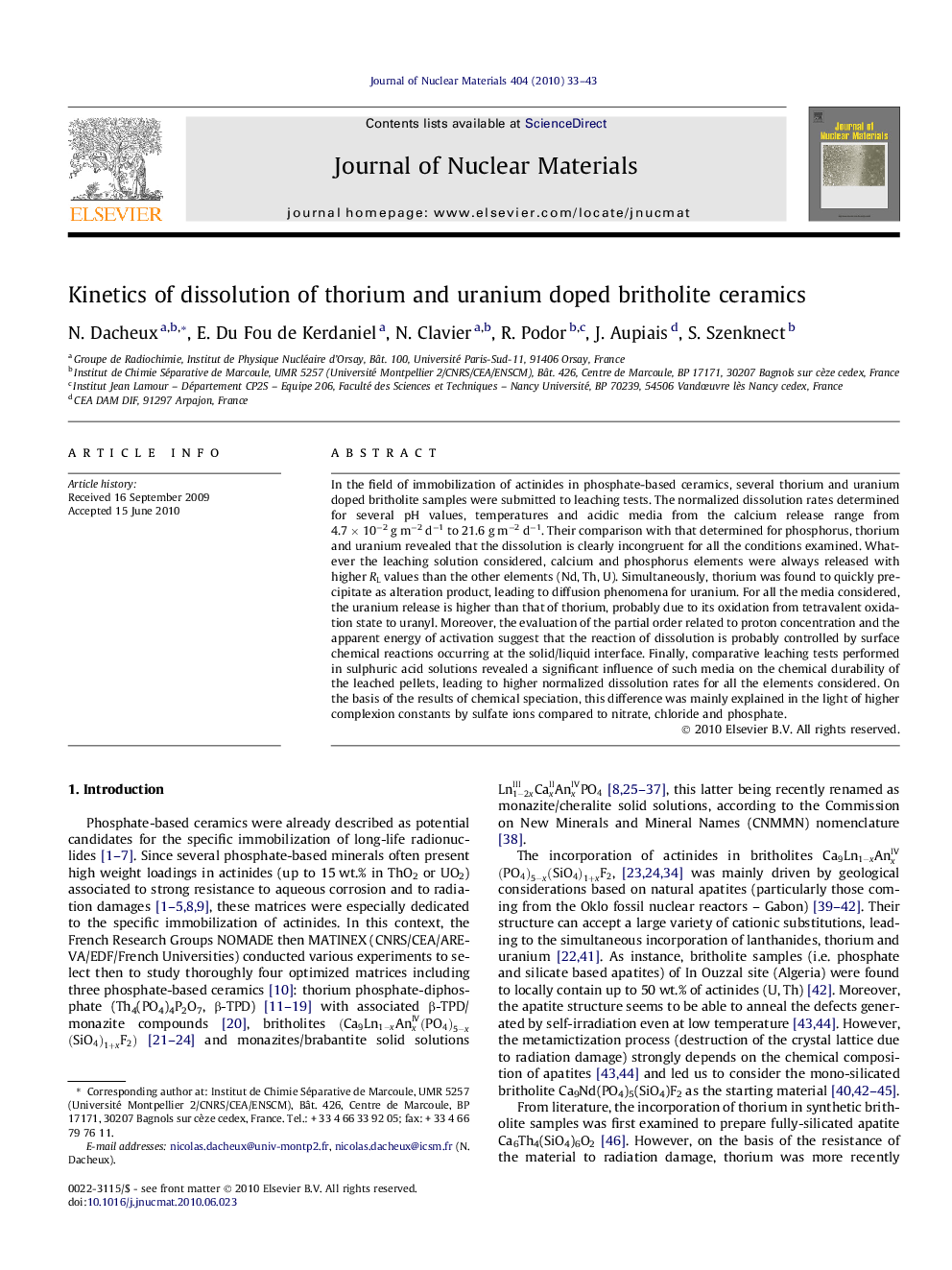| Article ID | Journal | Published Year | Pages | File Type |
|---|---|---|---|---|
| 1567742 | Journal of Nuclear Materials | 2010 | 11 Pages |
In the field of immobilization of actinides in phosphate-based ceramics, several thorium and uranium doped britholite samples were submitted to leaching tests. The normalized dissolution rates determined for several pH values, temperatures and acidic media from the calcium release range from 4.7 × 10−2 g m−2 d−1 to 21.6 g m−2 d−1. Their comparison with that determined for phosphorus, thorium and uranium revealed that the dissolution is clearly incongruent for all the conditions examined. Whatever the leaching solution considered, calcium and phosphorus elements were always released with higher RL values than the other elements (Nd, Th, U). Simultaneously, thorium was found to quickly precipitate as alteration product, leading to diffusion phenomena for uranium. For all the media considered, the uranium release is higher than that of thorium, probably due to its oxidation from tetravalent oxidation state to uranyl. Moreover, the evaluation of the partial order related to proton concentration and the apparent energy of activation suggest that the reaction of dissolution is probably controlled by surface chemical reactions occurring at the solid/liquid interface. Finally, comparative leaching tests performed in sulphuric acid solutions revealed a significant influence of such media on the chemical durability of the leached pellets, leading to higher normalized dissolution rates for all the elements considered. On the basis of the results of chemical speciation, this difference was mainly explained in the light of higher complexion constants by sulfate ions compared to nitrate, chloride and phosphate.
